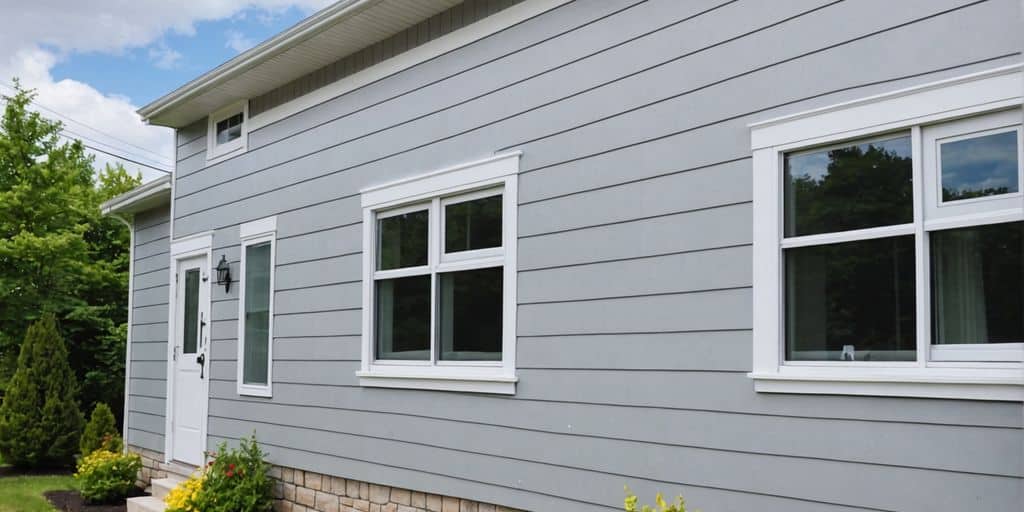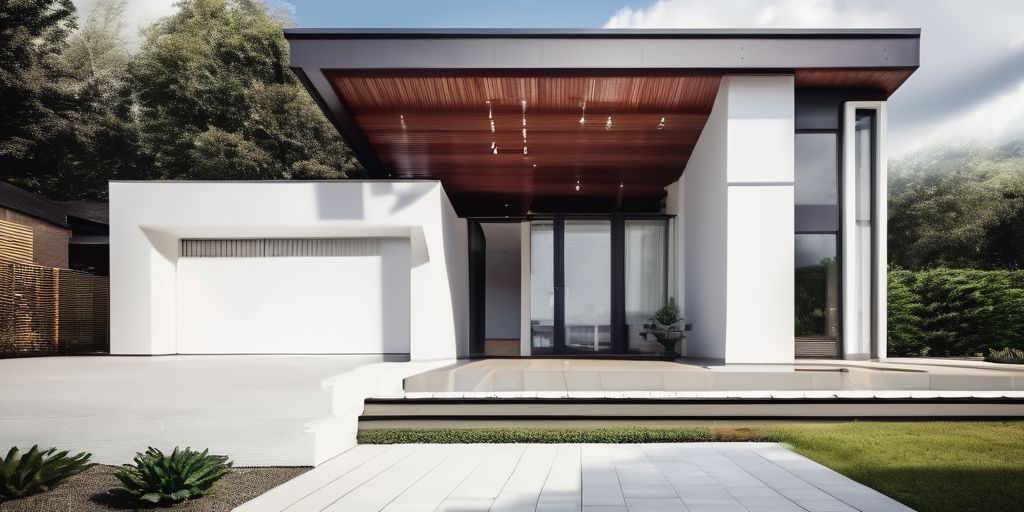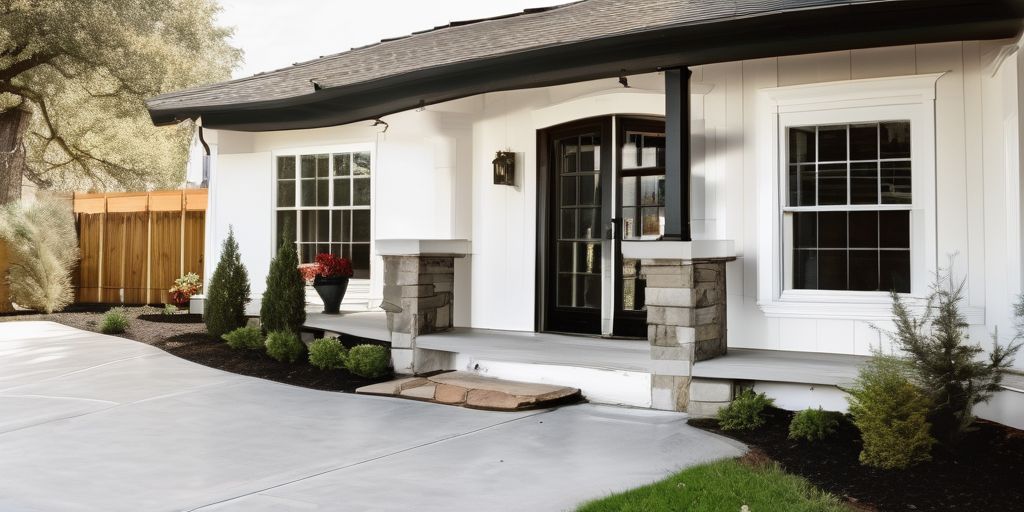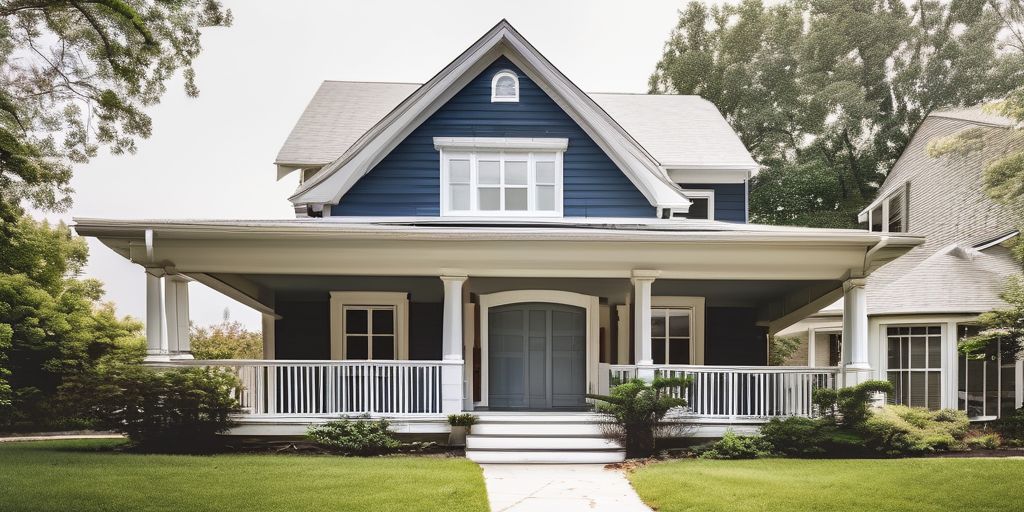Painting aluminum siding in St. Catharines can be tricky due to temperature changes. It’s important to know how temperature, humidity, and wind can affect your painting project. With the right planning and techniques, you can get a great, long-lasting finish on your siding.
Key Takeaways
- Check the weather forecast before you start painting to avoid extreme temperatures.
- Clean and fix your siding before painting to help the paint stick better.
- Use acrylic latex paint for best results on aluminum siding.
- Work in small sections to manage drying times and temperature changes.
- Additives can help improve paint performance in different weather conditions.
Understanding the Impact of Temperature on Aluminum Siding Paint
When painting aluminum siding in St. Catharines, it’s essential to understand how temperature affects the process. Temperature fluctuations can significantly impact the quality and durability of your paint job. Let’s dive into the key factors to consider.
How Temperature Affects Paint Adhesion
Temperature plays a crucial role in paint adhesion. If it’s too cold, the paint may not stick well to the aluminum siding. Conversely, if it’s too hot, the paint can dry too quickly, leading to an uneven finish. Aim for a temperature range of 50°F to 85°F for the best results.
The Role of Humidity in Paint Application
Humidity levels can also affect your painting project. High humidity can cause the paint to dry slowly, leading to drips and an uneven coat. On the other hand, low humidity can make the paint dry too fast. Ideally, you want a humidity level between 40% and 70%.
Why Wind Speed Matters
Wind speed is another factor to consider. Strong winds can cause dust and debris to stick to the wet paint, ruining the finish. Additionally, wind can make the paint dry too quickly, leading to cracks. Try to paint on days when the wind speed is less than 10 mph.
Remember, the impact of climate on painting vinyl siding is crucial for maintaining a home’s aesthetic and structural integrity. The same principles apply to aluminum siding.
By understanding these factors, you can better plan your painting project and achieve a long-lasting, beautiful finish for your aluminum siding.
Choosing the Right Time to Paint Your Aluminum Siding
Best Seasons for Painting in St. Catharines
Choosing the right season is crucial for a successful paint job. In St. Catharines, the best times to paint are usually late spring and early fall. During these periods, temperatures are moderate, and humidity levels are more stable. Avoid painting in the peak of summer or the dead of winter, as extreme temperatures can affect paint adhesion and drying times.
Ideal Temperature Ranges for Painting
For optimal results, aim to paint when the temperature is between 50°F and 85°F. Avoid painting in extreme heat or cold, as this can lead to issues like poor adhesion and uneven drying. Here’s a quick reference table for ideal conditions:
| Weather Condition | Optimal Range |
|---|---|
| Temperature | 50°F – 85°F |
| Humidity | 40% – 70% |
| Wind Speed | <10 mph |
Monitoring Weather Forecasts
Always keep an eye on the weather forecast before starting your painting project. Sudden changes in weather can ruin your hard work. Use reliable weather apps or websites to track conditions. If you notice a forecast for rain or high winds, it’s best to reschedule. Proper planning ensures a smooth painting process and a durable finish.
Tip: Proper planning ensures reliable results and a smooth painting process. Avoid painting in extreme weather conditions to prevent any temperature-related issues.
Preparing Your Aluminum Siding for Painting
Cleaning and Repairing the Surface
Before you start painting, it’s crucial to clean and repair your aluminum siding. A clean surface ensures better paint adhesion. Follow these steps:
- Use a pressure washer to remove dirt and grime.
- Scrub stubborn spots with a brush and mild detergent.
- Inspect for any damage, such as dents or holes, and repair them.
- Allow the siding to dry completely before moving on to the next step.
Importance of Priming
Priming is a vital step in the painting process. It helps the paint stick better and last longer. Here’s how to do it:
- Select an acrylic primer specifically designed for metal surfaces.
- Apply the primer using a brush or roller, following the manufacturer’s instructions.
- Let the primer dry thoroughly before applying the paint.
Tools and Materials Needed
Having the right tools and materials can make your painting project smoother. Here’s a list of what you’ll need:
- High-quality paintbrushes and rollers
- Paint sprayer for larger areas
- Acrylic primer and paint
- Drop cloths and painter’s tape
- Ladder or scaffolding for higher areas
Remember, using the right tools can make a big difference in the outcome of your project.
By following these steps, you’ll be well on your way to a successful paint job. Whether you’re an experienced exterior painter or a DIY enthusiast, preparation is key to achieving a beautiful and long-lasting finish.
Techniques for Managing Temperature Fluctuations
Working in Smaller Sections
When painting aluminum siding, it’s wise to work in smaller sections. This approach helps you manage the drying time and ensures even coverage. Here are some tips:
- Divide the surface into manageable areas.
- Complete one section before moving to the next.
- This method helps in adapting to temperature changes more effectively.
Adjusting Drying Times
Temperature fluctuations can affect drying times. In cooler temperatures, the paint may take longer to dry. Here’s how to handle it:
- Allow for longer drying times in cooler weather.
- Be patient and avoid rushing the process.
- In warmer temperatures, the paint may dry too quickly, so keep an eye on it.
Remember, adapting to temperature changes requires flexibility and attention to detail.
Using Additives to Improve Paint Performance
Additives can be a game-changer when dealing with temperature fluctuations. They help improve the paint’s performance and ensure a smooth finish. Consider the following:
- Use flow improvers to maintain a consistent texture.
- Anti-mildew additives can be beneficial in humid conditions.
- UV protectants help in maintaining the paint’s color and durability.
By using these techniques, you can achieve a professional finish regardless of the temperature variations. Keep an eye on the weather forecast and plan your painting schedule accordingly.
Selecting the Best Paint for Temperature Management
Benefits of Acrylic Latex Paint
When it comes to painting aluminum siding, modern acrylic latex paint is a top choice. Here are some reasons why:
- Durability: It resists fading, peeling, and cracking.
- Flexibility: Adapts well to temperature changes.
- Ease of Use: Simple to apply and clean up.
Choosing Paint with UV Protection
UV rays can be harsh, especially during the hot summers in St. Catharines. Opt for paints that offer UV protection to keep your siding looking fresh. Benefits include:
- Reduced Fading: Keeps colors vibrant longer.
- Surface Protection: Shields against sun damage.
Opting for Anti-Mildew Additives
Humidity can be a concern, especially near the Welland Canal. Paints with anti-mildew additives help in:
- Preventing Mold Growth: Keeps your siding clean and healthy.
- Enhancing Longevity: Reduces the need for frequent repaints.
Remember, choosing the right paint can make a significant difference in the longevity and appearance of your aluminum siding.
By selecting the appropriate paint, you can ensure a durable and aesthetically pleasing finish that withstands the varying weather conditions in St. Catharines.
Practical Tips for a Successful Paint Job
Avoiding Common Mistakes
To ensure a smooth painting process, avoid these common pitfalls:
- Skipping Surface Prep: Always clean and repair the surface before painting.
- Painting in Extreme Weather: Avoid painting when it’s too hot or too cold.
- Using Low-Quality Paint: Invest in good quality paint for a longer-lasting finish.
Ensuring Even Coverage
Achieving even coverage is crucial for a professional look. Here are some tips:
- Use the Right Tools: High-quality brushes and rollers make a big difference.
- Apply Multiple Coats: Two or more thin coats are better than one thick coat.
- Maintain a Wet Edge: This helps to avoid lap marks.
Maintaining Your Painted Siding
Proper maintenance can extend the life of your paint job:
- Regular Cleaning: Wash your siding annually to remove dirt and mildew.
- Inspect for Damage: Check for any cracks or peeling paint and address them promptly.
- Touch-Up Paint: Keep some extra paint for touch-ups to keep your siding looking fresh.
Remember, maintaining the right temperature is key to a successful paint job. Keep an eye on the weather forecast and plan your painting schedule accordingly.
Dealing with Temperature-Related Issues During Painting
Identifying Temperature-Related Problems
When painting aluminum siding, temperature fluctuations can cause several issues. Here are some common problems to watch out for:
- Peeling paint: This can happen if the paint doesn’t adhere properly due to temperature changes.
- Uneven drying: Paint may dry too quickly or too slowly, leading to an uneven finish.
- Cracking and peeling: Extreme temperatures can cause the paint to crack and peel over time.
Solutions for Uneven Drying
To manage uneven drying, consider these tips:
- Monitor the temperature: Use a reliable thermometer to keep track of the temperature while painting.
- Adjust drying times: In cooler temperatures, allow more time for the paint to dry between coats.
- Control humidity: High humidity can affect drying. Use dehumidifiers or fans to maintain optimal humidity levels.
Remember, maintaining the right temperature and humidity levels is crucial for achieving a smooth and even finish on your aluminum siding.
Preventing Paint Cracking and Peeling
To prevent cracking and peeling, follow these steps:
- Check the weather forecast: Plan your painting schedule around stable weather conditions.
- Use high-quality paint: Opt for paints that are designed to withstand temperature fluctuations.
- Apply primer: A good primer can help the paint adhere better and last longer.
- Work in smaller sections: This helps manage the drying process and ensures even coverage.
By being mindful of the weather and taking the necessary precautions, you can achieve a professional and long-lasting finish on your aluminum siding.
Painting in extreme temperatures can be tricky. If it’s too hot or too cold, the paint might not stick well or dry properly. To avoid these issues, it’s best to paint when the weather is mild. For more tips and expert advice on painting, visit our website.
Conclusion
In the end, painting aluminum siding in St. Catharines can be a rewarding project if you plan carefully and pay attention to the weather. By keeping an eye on the temperature, using good-quality paint, and following the right steps, you can make your home look great and protect it from the weather. Remember, a well-done paint job not only makes your house look nicer but also helps it last longer. Happy painting!
Frequently Asked Questions
What is the best type of paint for aluminum siding?
The best type of paint for aluminum siding is acrylic latex paint. It sticks well to the surface and lasts a long time.
Can I paint aluminum siding in cold weather?
It’s best not to paint aluminum siding in cold weather. The paint might not stick properly, and it could have trouble drying.
How can I handle temperature changes while painting?
To handle temperature changes, work on smaller areas at a time and avoid painting when the temperature swings a lot.
What tools do I need for painting aluminum siding?
You’ll need a good paintbrush, a roller, and a paint sprayer for bigger areas. These tools will help you get the job done right.
What are the best ways to apply paint to aluminum siding?
You can use a brush, a roller, or a sprayer. Make sure to use even, overlapping strokes for the best results.
How do I fix problems caused by temperature while painting?
Watch the weather forecast and paint when the temperature is just right. Avoid painting in very hot or cold weather to prevent issues.





